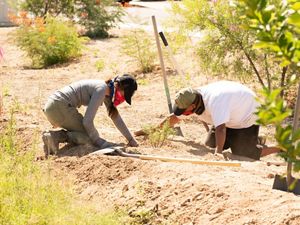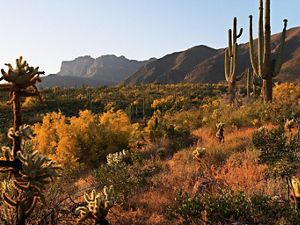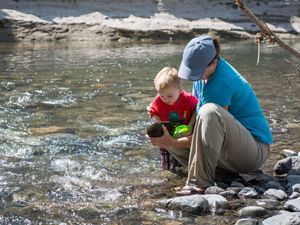Comprehensive Science Review Shows Fuel Treatments Reduce Future Wildfire Severity
Researchers from the USDA Forest Service Rocky Mountain Research Station, The Nature Conservancy and the University of Montana examined 30 years of fuel treatment effects on wildfire severity.
Media Contacts
-
Heather Beshears
Media Relations
Phone: 480-628-0578
Email: heather.beshears@tnc.org
There is a common belief that prescribed burning, thinning trees and clearing underbrush reduce risks of the severity of future fires. But is that true? Sometimes anecdotal evidence or limited observations can create doubt. Researchers from the USDA Forest Service Rocky Mountain Research Station, The Nature Conservancy and the University of Montana dug deep into the scientific literature for a closer look. Spoiler alert: the answer is yes—proactive ecological forest management can change how fires behave and reduce wildfire severity, under a wide range of conditions and forest types.
Researchers found overwhelming evidence that in seasonally dry mixed conifer forests in the western U.S., reducing surface and ladder fuels and tree density through thinning, coupled with prescribed burning or pile burning, could reduce future wildfire severity by more than 60% relative to untreated areas. The study results were recently published in Forest Ecology and Management. You can download this Science You Can Use in 5 minutes for an overview of the research methods, key findings, management considerations and links to related publications.
Fire is an essential component of many western forests. Yet historic fire suppression and climate change are contributing to increased fire activity and more severe wildfires, where overstory trees are killed. Treatments prepare a landscape, priming the next wildfire to burn at lower intensity, burning underbrush and smaller trees. This preserves more mature trees and helps foster a fire level that is more in balance with the landscape.
Kimberley Davis is a Forest Service Research Ecologist and led the project analyzing 40 studies where wildfire burned into different vegetation treatments, spanning 11 western states. The last review of this kind was over a decade ago, with many new case studies and scientific advances since then. Researchers examined effects of various treatments in different forest types, ranging from ponderosa pine forests in Arizona and New Mexico up to the subalpine zones of the northern Rocky Mountains.
The review hands natural resource professionals and communities the evidence needed to support continued investments in managing vegetation and fuels. “These treatments are very effective and the science clearly shows that they can reduce fire severity,” said Davis.
While responses varied, generally the combination of thinning and prescribed burning showed the greatest impact on reducing future fire severity. Areas that were only thinned had less benefit in reducing wildfire severity. Prior low or moderate-severity wildfire also reduced fire severity in subsequent wildfires, although to a lesser extent than thinning with prescribed burning.
Time also matters. “As treatments get older, they’re less effective,” said Davis. After ten years treatments were less than half as effective as younger treatments, underscoring the importance of repeated, or maintenance, treatments.
In the long run, forest fuel reduction projects can improve conditions for firefighters responding to wildfires. They mitigate long-term losses of carbon and wildlife habitat and protect watersheds from more severe wildfire. Treatments also create more options for determining appropriate responses to lightning and other unplanned ignitions. When designed to meet the unique needs of the forest type and nearby communities, these tools can support the longevity of clean water resources, wildlife habitat and outdoor places to work and recreate.
“This review shows that treatments can reduce future wildfire severity, which is key to protecting important forest habitats,” said Kerry L. Metlen, forest ecologist with The Nature Conservancy and a contributing author of the review. “This gives us hope that by accelerating the use of these tools, in conjunction with work to promote fire-adapted communities, we can address the wildfire crisis together.”
The Nature Conservancy is a global conservation organization dedicated to conserving the lands and waters on which all life depends. Guided by science, we create innovative, on-the-ground solutions to our world’s toughest challenges so that nature and people can thrive together. We are tackling climate change, conserving lands, waters and oceans at an unprecedented scale, providing food and water sustainably and helping make cities more sustainable. The Nature Conservancy is working to make a lasting difference around the world in 81 countries and territories (40 by direct conservation impact and 41 through partners) through a collaborative approach that engages local communities, governments, the private sector, and other partners. To learn more, visit nature.org or follow @nature_press on X.



